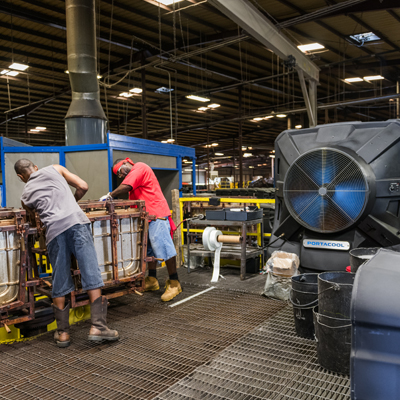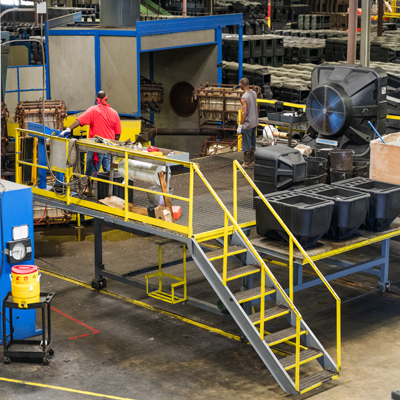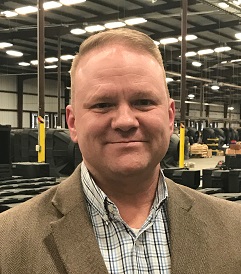Summer is nearly upon us! If last year, the fourth hottest on record, is any indication of the temperatures to come, preparing for hot conditions is advisable. Heat is a condition that affects all work spaces, whether indoors or out. In addition to the climate, heat can be generated by machinery that increases the average ambient temperature of the surrounding environment. Additionally, the use of personal protective equipment (PPE), while helpful and often necessary, can be an added source of warmth.

Relative to work-related heat situations in the United States, it is estimated that more than 1,300 deaths per year are due to extreme heat.1 However, it is important to note that heat-related illnesses and death are preventable. Forethought, along with proper training and resources, can go a long way to combating heat-related issues.
Here are a few proactive steps to implement to address heat and keep employees safe.
Step 1: Develop an IIPP
All companies should have an injury and illness prevention program (IIPP) to help identify workplace hazards and protect all employees. As a basic written safety program, an effective IIPP can improve the safety and health in every workplace. Within the IIPP, be sure to include sources of heat and the mitigation steps we review in this article.
An IIPP is not a one-size-fits-all plan. The plan should be tailored to your company’s specific work environment by assessing details such as crew size, work shift length, and working conditions (i.e., average temperature of the environment). Gathering information on current safety rules, policies, and practices will help develop a good foundation on which to build a written plan.
Step 2: Provide Heat Stress Prevention Training
Training is crucial to ensure that managers and employees understand the true impact of heat. Be sure workers are informed by providing specific training times to review heat illness symptoms. Utilize training materials and guidelines provided by OSHA online.
Another effective option easily accessed online is the Heat Illness Prevention Program (HIPP). This 45-minute course helps educate employees on how to stay safe during high heat conditions, while complying with state and federal heat illness training requirements.
Developed in cooperation with Cal/OSHA, the Occupational Safety Councils of America (OSCA) offers HIPP to provide employee and supervisor education regarding heat illness symptoms, ways to prevent illness, and what to do if symptoms occur. This training program is cost-effective; $15 per student is a relatively small price to pay compared to injury-related costs.
Step 3: Implement Daily Assessment Tools
It is very important to train supervisors to account for the heat index in the summer to accurately reflect the impact of excessive heat on employees working outside. To help plan for outdoor work activities, OSHA and the National Institute for Occupational Safety and Health (NIOSH) have developed the OSHA-NIOSH Heat Safety Tool. This mobile app (found on their websites) displays the risk level to workers after calculating the heat index for their worksite.
Be sure to list this tool in the written IIPP, as it is an easily accessible tool to use daily during extreme heat.

Step 4: Implement On-Site Engineering Controls
A hot environment, exacerbated by the outdoor climate (whether that means that doors must be left open or that your building isn’t well insulated), can slow down reaction times and create an unsafe environment. Consider employing portable cooling solutions to help bring down the ambient working temperature.
When traditional air-conditioning is impractical, ineffective, or simply too expensive, a great alternative is to utilize a portable evaporative cooler to keep employees cool. Unlike oscillating or mounted stationary fans that simply circulate warm, stagnant air, an evaporative cooler makes the work area more comfortable by actually cooling the distributed air using the all-natural process of evaporation. While evaporative coolers do use water, it is important to note that they are not misters. A variety of sizes of evaporative coolers are available on the market, making it easy to accommodate varying needs while lowering the overall temperature of indoor or outdoor working spaces.
Step 5: Implement Administrative Controls
When engineering controls are not enough to keep worker heat exposure in check, administrative controls offer a change in work procedures to accommodate conditions. This includes adapting worker activity to account for high heat conditions, whether that means scheduling work earlier or later in the day or implementing work/rest schedules. Acclimating workers is a necessary process, even if it seems counterintuitive to generating productivity (e.g., a reduced work shift during excessive heat). An effective heat acclimatization program gradually increases an unacclimated worker’s exposure to heat over a 7- to 14-day period. By building up tolerance, this process can help ensure safety and increase productivity by reducing mistakes made as a result of heat fatigue. Keep in mind that acclimatized workers who take time off or are not exposed to heat stress for a week or more may need 2 to 3 days to effectively reacclimate.
Conclusion
While certain environmental conditions may be unavoidable in the workplace, there are steps to take to help employees stay safe in heat-related conditions. Since there is not a one-size-fits-all solution, it is crucial to evaluate your particular environment to customize your safety plan. At the bottom line, heat safety is not only necessary and beneficial but also can ultimately lead to employees working with greater efficiency and more productivity.
1.Page 6, EPA: https://www.epa.gov/sites/production/files/2016-08/documents/print_heat-deaths-2016.pdf.
 Terry DeRise is the Manufacturing Director for Portacool, LLC, where he oversees all Portacool portable evaporative cooler manufacturing. With 27 years of experience, he leads a team of 130 at Portacool’s east Texas manufacturing facility, where he is a believer in proactive planning to reduce workplace risks for all employees. For more information or to submit questions, send an e-mail to support@portacool.com. Terry DeRise is the Manufacturing Director for Portacool, LLC, where he oversees all Portacool portable evaporative cooler manufacturing. With 27 years of experience, he leads a team of 130 at Portacool’s east Texas manufacturing facility, where he is a believer in proactive planning to reduce workplace risks for all employees. For more information or to submit questions, send an e-mail to support@portacool.com. |
